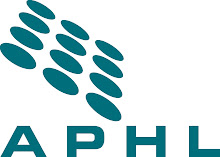by Kristy Kubota, MPH, senior specialist for PulseNet Program, and Kara Watarida, temporary PulseNet program coordinator
Imagine an international outbreak of E. coli O157:H7. With the changes of the nation’s eating habits, the dynamics of the US population, increased international travel and the globalization of the food supply, global foodborne outbreaks do occur and may increase due to these factors. Thanks to PulseNet International there is a way to determine if an outbreak happening in your town is linked to an outbreak in Europe.
On November 12-13, CDC, APHL, WHO and PulseNet regional coordinators from around the world met in Buenos Aires, Argentina, for the 2nd PulseNet international Steering Planning meeting. This meeting brought together PulseNet coordinators from the United States, Europe, Canada, Pacific Asia, Latin America and Middle East to discuss issues related to protocols/next generation subtyping methods, regional updates and development of a strategic plan for the coming year.
One of the more interesting aspects of this meeting was learning about international outbreaks and how molecular subtyping has been applied for foodborne investigations worldwide. With all nations using the same standardized PulseNet protocols, DNA fingerprints are generated and can be “matched” across country borders. For example, in 2009 PulseNet Pacific Asia conducted an E. coli O157:H7 outbreak investigation associated with a steakhouse restaurant with possible links to U.S. imported beef. The link was dismissed upon sharing the subtyping information between the US and Japan.
The PulseNet network has come a long way since its inception in 1996, as a collaborative “project” between CDC, APHL and a few US states. It has now grown to PulseNet International -- United States, Europe, Canada, Asia Pacific, Latin America, Middle East and soon Africa. APHL will continue to support these partners in working towards a sustainable international foodborne diseases surveillance network.
Monday, November 23, 2009
Subscribe to:
Comments (Atom)




